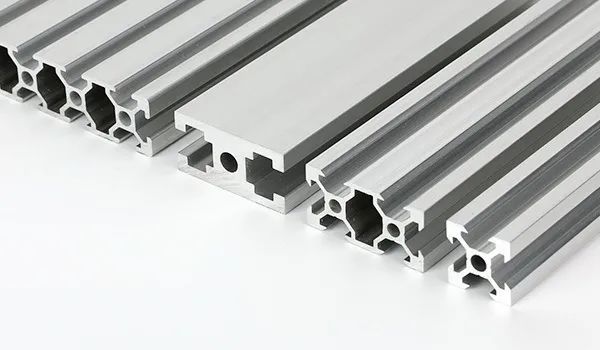Kemet Share | Application and characteristics of aluminum profiles
Release time:
2021-04-06
Aluminum is a light metal, and its compounds are widely distributed in nature. The resource reserves of aluminum in the earth's crust are second only to oxygen and silicon, ranking third.
Aluminum is a light metal, and its compounds are widely distributed in nature. The resource reserves of aluminum in the earth's crust are second only to oxygen and silicon, ranking third. Among all metal varieties, the output is second only to steel and is the second largest category of metals. Aluminum has special chemical and physical properties, not only light weight, hard texture, but also has good ductility, electrical conductivity, thermal conductivity, heat resistance and nuclear radiation resistance. It is an important basic raw material for the development of the national economy.
aluminum application scope: the application in the construction field has created the diversification of building life; rare radiator materials; decoration field; home appliance field; industrial field; home furnishing field, etc. Features of
aluminum profile:
1. Corrosion resistance The density of
aluminum profile is only 2.7g/cm3, which is about 1/3 of the density of steel, copper or brass (7.83g/cm3 and 8.93g/cm3 respectively). Aluminum exhibits excellent corrosion resistance under most environmental conditions, including in air, water (or brine), petrochemicals, and many chemical systems.
2. Electrical Conductivity
Aluminum is often chosen for its excellent electrical conductivity. On the basis of equal weight, the conductivity of aluminum is nearly twice that of copper.
3. Thermal conductivity rate
The thermal conductivity rate of aluminum alloy is about 50-60% of that of copper, which is beneficial to the manufacture of heat exchangers, evaporators, heating appliances, cooking utensils, as well as the cylinder head and radiator of automobiles.
4. Non-ferromagnetic
Aluminum profiles are non-ferromagnetic, which is an important feature for the electrical and electronics industries. Aluminum profiles are not pyrophoric, which is important for applications involving handling or contact with flammable and explosive materials.
5. Machinability
The machinability of aluminum profiles is excellent. In the various wrought aluminum alloys and cast aluminum alloys, as well as in the various states that these alloys have after production, the variation in machining characteristics is considerable, which requires special machine tools or techniques.
6. Formalability
Specific tensile strength, yield strength, ductility, and corresponding work hardening rate govern the variation in allowable deformation.
7. Recyclability
Aluminum has extremely high recyclability, and the characteristics of recycled aluminum are almost the same as those of primary aluminum.
aluminum application scope: the application in the construction field has created the diversification of building life; rare radiator materials; decoration field; home appliance field; industrial field; home furnishing field, etc. Features of
aluminum profile:
1. Corrosion resistance The density of
aluminum profile is only 2.7g/cm3, which is about 1/3 of the density of steel, copper or brass (7.83g/cm3 and 8.93g/cm3 respectively). Aluminum exhibits excellent corrosion resistance under most environmental conditions, including in air, water (or brine), petrochemicals, and many chemical systems.
2. Electrical Conductivity
Aluminum is often chosen for its excellent electrical conductivity. On the basis of equal weight, the conductivity of aluminum is nearly twice that of copper.
3. Thermal conductivity rate
The thermal conductivity rate of aluminum alloy is about 50-60% of that of copper, which is beneficial to the manufacture of heat exchangers, evaporators, heating appliances, cooking utensils, as well as the cylinder head and radiator of automobiles.
4. Non-ferromagnetic
Aluminum profiles are non-ferromagnetic, which is an important feature for the electrical and electronics industries. Aluminum profiles are not pyrophoric, which is important for applications involving handling or contact with flammable and explosive materials.
5. Machinability
The machinability of aluminum profiles is excellent. In the various wrought aluminum alloys and cast aluminum alloys, as well as in the various states that these alloys have after production, the variation in machining characteristics is considerable, which requires special machine tools or techniques.
6. Formalability
Specific tensile strength, yield strength, ductility, and corresponding work hardening rate govern the variation in allowable deformation.
7. Recyclability
Aluminum has extremely high recyclability, and the characteristics of recycled aluminum are almost the same as those of primary aluminum.
Contact Information
Customer Service Tel: +86-539-7177878
Mailbox: kemet@sdkemet.com
Zip Code: 273400
Address: Linyi City, Shandong Province
Copyright©2023 Kemet New Materials Technology Co., Ltd. All Rights Reserved





